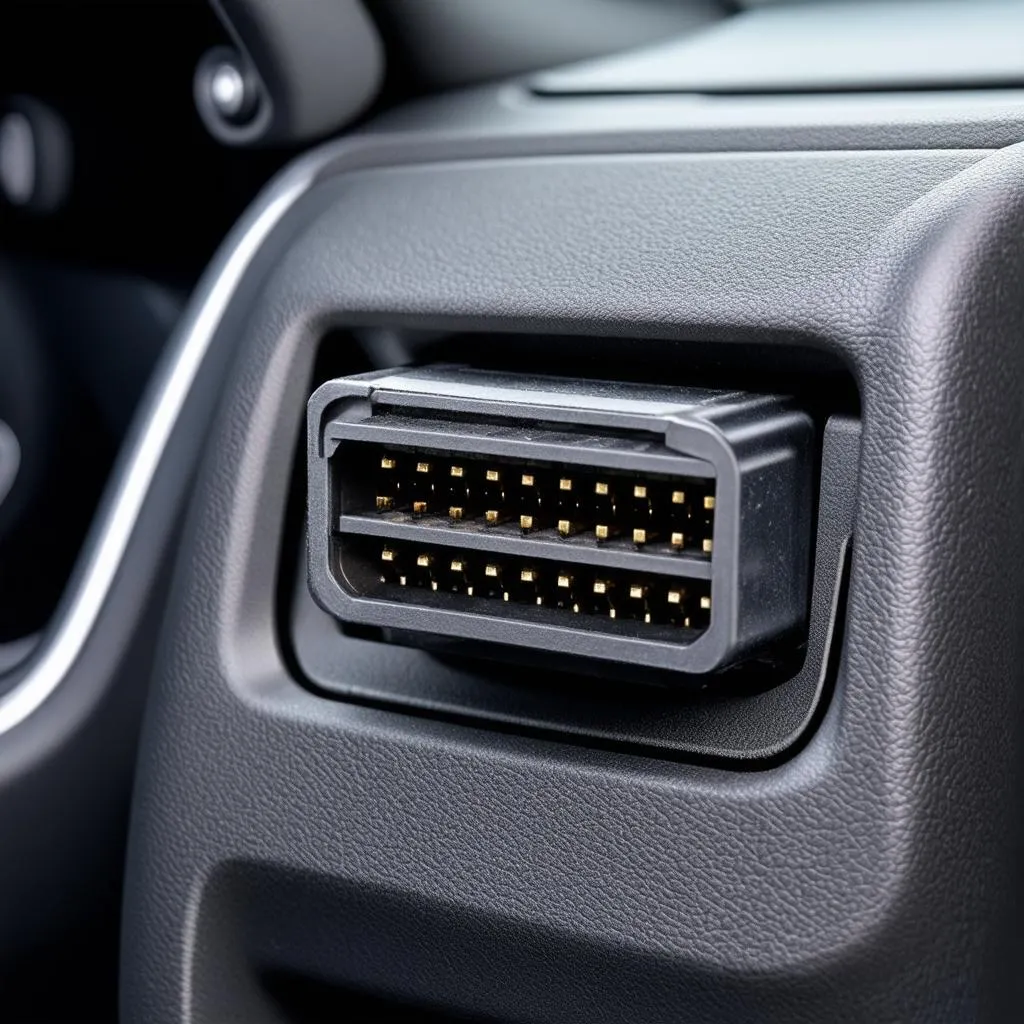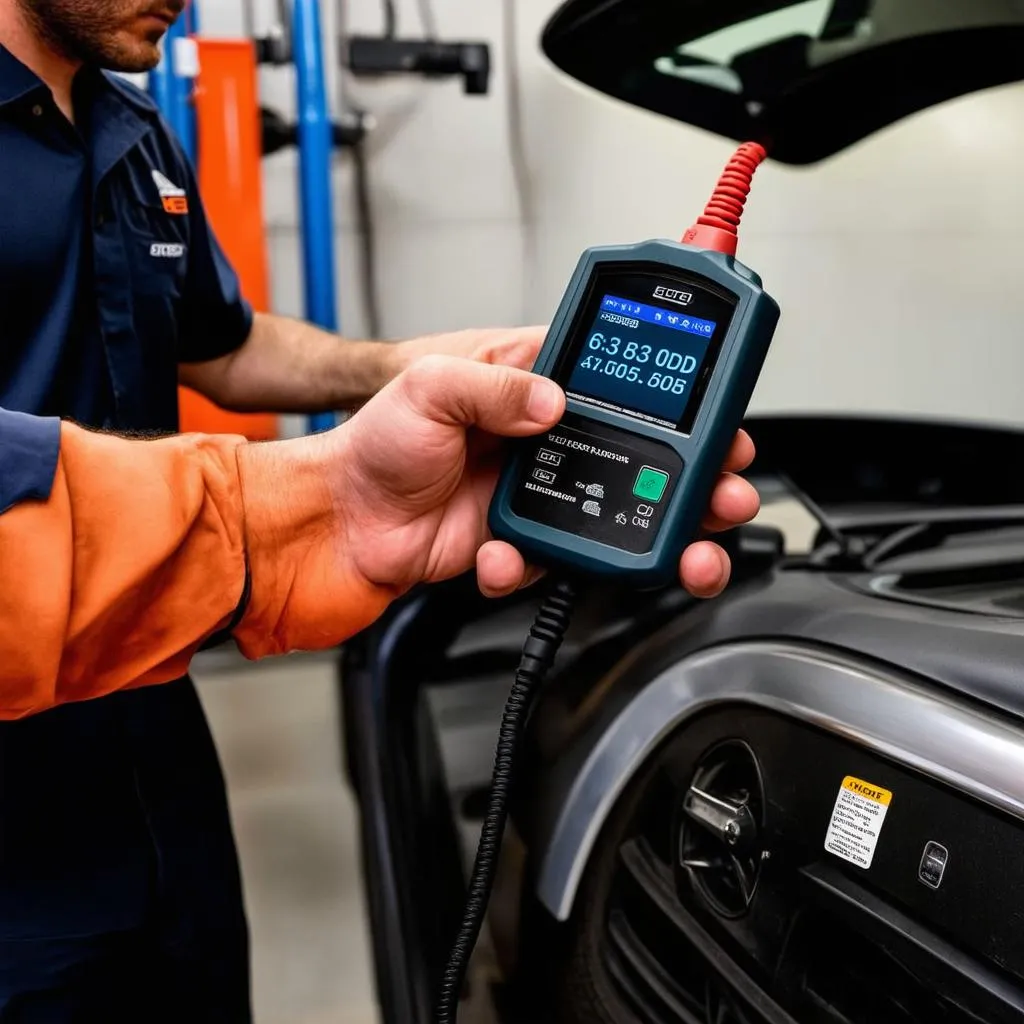Imagine this: you’re driving down the road, enjoying the scenery, when suddenly a yellow light pops up on your dashboard. It’s that dreaded “check engine” light. Ugh, what now? Before you panic, remember that little port under your steering wheel? That, my friend, is the gateway to understanding what your car is trying to tell you. It’s called the OBD port, but what does OBD stand for?
OBD Meaning: Decoding the Acronym and Its Significance
Obd Stands For On-Board Diagnostics. It’s essentially the language your car uses to communicate its health and performance. Think of it as your car’s personal translator, converting complex mechanical and electrical signals into diagnostic trouble codes (DTCs) that mechanics and car enthusiasts can understand.
Why is OBD Important?
From a Mechanic’s Perspective: Michael Schmidt, a seasoned mechanic with over 20 years of experience, shares, “The OBD system revolutionized car repair. Before OBD, diagnosing car problems was like navigating a maze in the dark. Now, with a simple scan tool, we can pinpoint the issue quickly and efficiently, saving time and money for car owners.”
From an Economic Standpoint: OBD systems have also driven down repair costs. By making diagnostics more straightforward, mechanics can identify and fix problems faster, reducing labor costs.
For Car Enthusiasts: OBD systems have empowered car enthusiasts to take control of their vehicles. With affordable OBD scanners readily available, car owners can diagnose problems themselves, monitor performance, and even customize their car’s settings.
 Close-up of OBD port
Close-up of OBD port
Delving Deeper: How OBD Works and Its Evolution
The OBD system comprises a network of sensors strategically placed throughout your car. These sensors continuously monitor various systems, including the engine, transmission, emissions, and more. When a sensor detects an anomaly, it generates a specific code that’s stored in the car’s computer.
OBD has evolved significantly over the years:
- OBD-I (Early 1980s): Early iterations were rudimentary, often limited to monitoring the engine and emissions systems.
- OBD-II (1996-Present): This standardized system revolutionized diagnostics, featuring a universal connector, standardized codes, and expanded monitoring capabilities.
Common Questions About OBD:
-
Where is the OBD port located? The OBD-II port is typically located under the dashboard, on the driver’s side, often near the steering column. You can refer to our guide on 1991 Honda Civic OBD Location for a visual representation.
-
Can I use any OBD scanner? While many generic scanners work, some vehicles may require manufacturer-specific scanners for advanced diagnostics.
-
What are some useful OBD tools? Beyond basic code readers, advanced OBD scanners provide live data streams, graphing capabilities, and even access to ABS information like you can learn about in our article about accessing ABS information with an OBD tool.
 Mechanic using OBD scanner
Mechanic using OBD scanner
OBD and Feng Shui: A Harmonious Connection?
Interestingly, the principles of OBD resonate with the ancient Chinese philosophy of Feng Shui. Just as Feng Shui seeks balance and harmony within a space, OBD strives to maintain balance and optimal performance within your car. By understanding and addressing the “energy flow” within your vehicle’s systems, you can promote longevity and a smoother ride.
Looking for More Automotive Insights?
Explore our website, techcarusa.com, for a wealth of information on various car-related topics, from understanding OBD code lists for Toyota vehicles to finding the best OBD-II readers on Amazon. We even delve into technical specifications like c-obd-ii-16m.
Need Help with Your OBD System? We’re Here!
For all your OBD needs, from choosing the right scanner to interpreting those cryptic codes, don’t hesitate to reach out to our team of automotive experts. Contact us on WhatsApp at +84767531508, and we’ll be happy to assist you. Remember, a happy car means a happy driver!